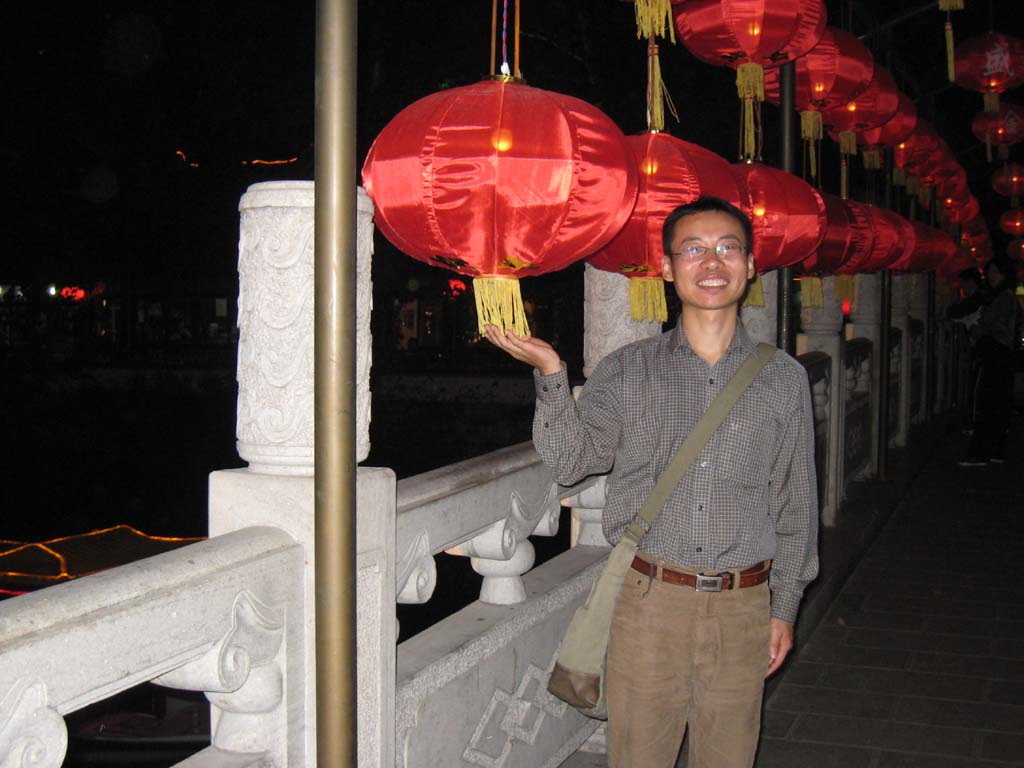
EDUCATION
1997.9 - 2001.6 Nankai University, B. S.
2001.7 - 2002.4 Institute of Coal Chemistry, Chinese Academy of Sciences
2005.6 - 2010.6 Nankai University, SKLEOC, Ph. D.
CONTACT
E-Mail:
This email address is being protected from spambots. You need JavaScript enabled to view it.
DISSERTATION
Abstract
The three components coupling reactions of electron-deficient double-bonds, alkynes and organometallic reagents catalyzed by nickel complexes are atom-economical and efficient methods for synthesis of complex compounds from simple starting materials. The coupling reactions are classified as reductive and alkylative coupling according to the components provided by organometallic reagents in the products. At present time, researches on above-mentioned coupling reaction mainly focus on the reaction with carbonyl group. However, the coupling reactions with imine and carbon-carbon double bond are limited, perhaps due to less polarity and weaker electrophilic capacity of carbon-nitrogen and carbon-carbon double bond compared to carbon-oxygen double bond. To further explore the new reactions, this dissertation focus on nickel-catalyzed three components reductive coupling reaction of imines, alkynes and organozinc reagents, and alkylative coupling reaction of polar olefins, alkynes and organozinc reagents.
We developed a nickel-catalyzed three components reductive coupling reaction of imines, alkynes and organozincs for the first time. Through the comparison of ligands, we found that electron-rich monodentate phosphine/nickel complexes can catalyze this reaction, providing desirable coupling products in high yields, high regoselectivities and chemoselectivities. We further employed DTBM-SITCP, a chiral spiro monodentate phosphine ligand with a bulky substituent on phosphorus atom, to realize the asymmetric version of this reaction. Under optimal conditions, the Ni/DTBM-SITCP-catalyzed reductive coupling exhibited high yield and high enantioselectivities (up to 94% ee). The present nickel-catalyzed three components reductive coupling reaction of alkynes, imines and diethyl zinc provides a new effective way for the synthesis of allylamines with trisubstituted olefin moiety. The protective group of N atom of the product can be easily removed. The absolute configuration of the product was determined by using chemical correlation. A plausible reaction mechanism was proposed based on an isotope labeling experiment. A chiral induction model was proposed to rationalize the high chemoselectivities, regoselectivities and enantioselectivities.
By introducing electron-withdrawing groups on the olefin moiety, we realized a nickel-catalyzed alkylative coupling reaction of alkenes, alkynes and organozinc. This reaction exhibited high chemoselectivities, regoselectivities, stereoselectivies, and provided a convenient approach to the synthesis of a series of homoallylic esters with tetra-substituted olefin moiety. Bishomoallylic alcohols, amino acid derivatives and other multi-functional compounds can be easily obtained from the homoallylic esters by simple transformation.
Key Words: chiral spiro phosphine, nickel, alkyne, imine, highly polar alkene, catalysis, reductive coupling, alkylative coupling.
PUBLICATION
1.Chang-Yue Zhou, Shou-Fei Zhu, Li-Xin Wang, and Qi-Lin Zhou*, Enantioselective nickel-catalyzed reductive coupling of alkynes and imines, J. Am. Chem. Soc. 2010, 132, 10955-10957.
2.Yun Yang, Shou-Fei Zhu, Chang-Yue Zhou, Qi-Lin Zhou*, Nickel-catalyzed enantioselective alkylative coupling of alkynes and aldehydes: synthesis of chiral allylic alcohols with tetrasubstituted olefins, J. Am. Chem. Soc. 2008, 130, 14052-14053.
3.Yun Yang, Shou-Fei Zhu, Hai-Feng Duan, Chang-Yue Zhou, Li-Xin Wang, Qi-Lin Zhou*, Asymmetric reductive coupling of dienes and aldehydes catalyzed by nickel complexes of spiro phosphoramidites: Highly enantioselective synthesis of chiral bishomoallylic alcohols, J. Am. Chem. Soc. 2007, 129, 2248-2249.

